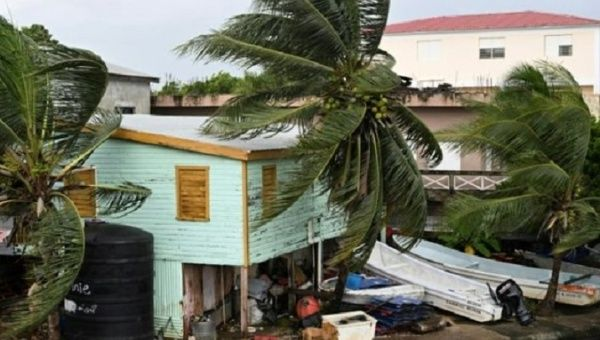
On Thursday afternoon, Hurricane Lisa, which was downgraded to a tropical storm after making landfall in Belize as a hurricane on Wednesday, is moving towards southeastern Mexico, now as a tropical depression, with heavy rains affecting Mexican and Guatemalan areas.
Mexico City, November 3 (RHC)-- On Thursday afternoon, Hurricane Lisa, which was downgraded to a tropical storm after making landfall in Belize as a hurricane on Wednesday, is moving towards southeastern Mexico, now as a tropical depression, with heavy rains affecting Mexican and Guatemalan areas.
According to the U.S. National Hurricane Center (NHC), tropical depression Lisa was about 60 miles southeast of Carmen City at 3:00 p.m. GMT, and had maximum sustained winds of 35 miles per hour. Although there are no coastal watches or warnings in effect, the NHC warned that the population of southeastern Mexico should continue to monitor its progress.
Lisa is moving west near 10 mph and that track is expected to continue as the center of the storm passes southeastern Mexico before turning northwest on Thursday night.
The tweet reads: "Lisa will favor very strong-intense rains in Ver, Oax, Chis, Tab, Camp, Yuc and QRoo. Scattered rains in Jal, Col, Mich, Gro, EdoMéx, CDMX, Mor, Tlax and Pue. Risk of floods and landslides in the southeast. Possible sleet/snow fall in the mountains of Baja California and Sonora."
On Friday morning, Lisa will slow down and move toward the Bay of Campeche. So far, maximum sustained winds have decreased to near 35 mph, with higher gusts, and further weakening is forecast as Lisa's center remains overland.
Lisa is also expected to produce rainfall amounts across Belize, northern Guatemala, the southern part of the Mexican state of Quintana Roo, southern and central Campeche, Tabasco, northern Chiapas and far eastern Veracruz, where there is a risk of flash flooding.
As for Martin, which is still a hurricane in the North Atlantic, its winds reach 85 miles per hour and it is moving northeast at 48 miles per hour. On Thursday, Hurricane Martin will remain large and strong but is expected to become a post-tropical cyclone in the next few hours.

